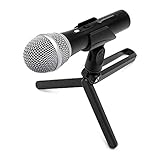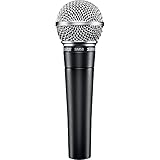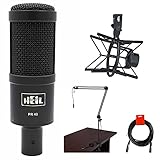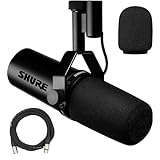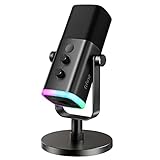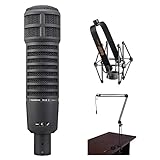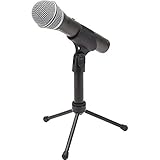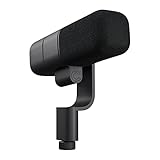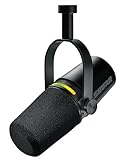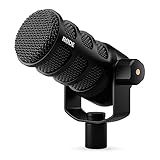Best Podcast Microphones For 2025: Our Top 10
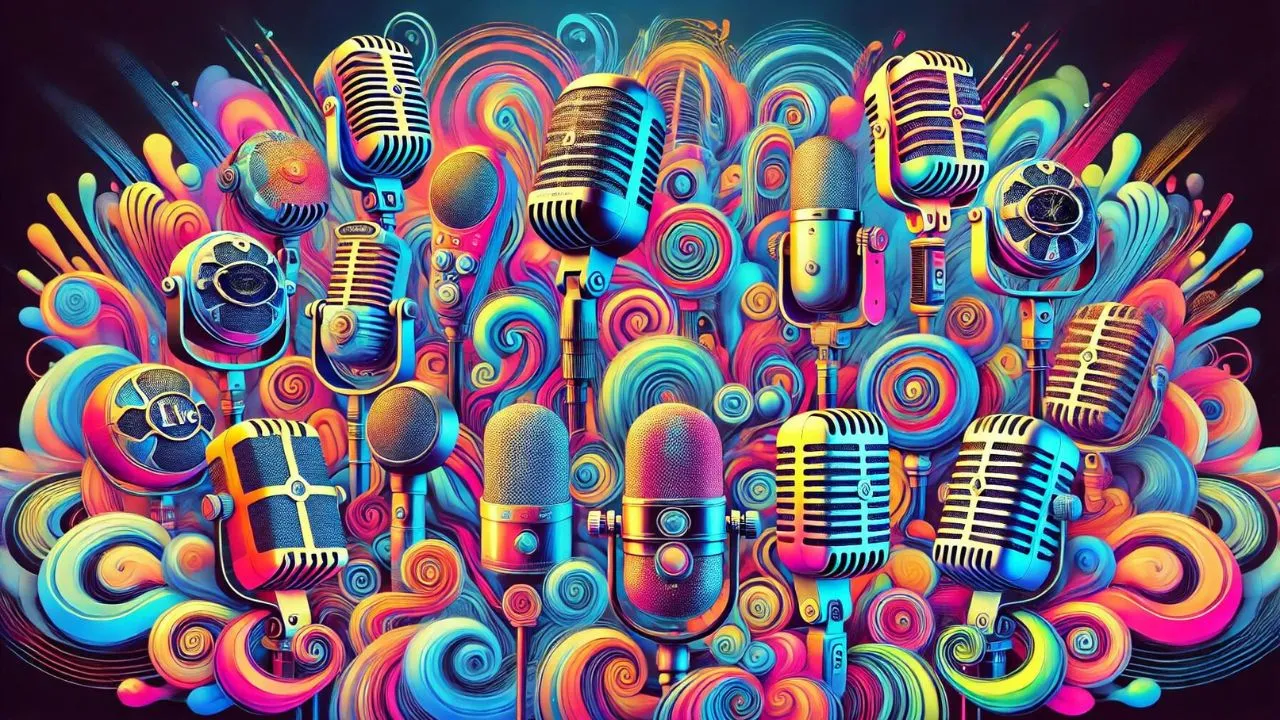
There’s nothing like getting behind a GREAT microphone.
It’s a huge confidence booster. But, do you need a great microphone for podcasting? Probably not, but the jury is still out on that one. Podcasters love to debate about microphones.
You do, however, need a GOOD microphone, and today, we’re going to be giving you our list of the top ten podcast microphones for every budget.
We realize not everyone has the funds to buy a top-tier microphone, and that’s ok.
You don’t need to break the bank for great sound quality – there are plenty of top-tier podcast microphones for around $100.
We’ve rounded up some of the best, and even found a few hidden gems for under $100. Ready to upgrade your sound without the hefty price tag?
Check out our picks!
Before we get into it we want to mention that we’re Amazon Associates and earn commission from qualifying purchases. If you purchases something from any of our Amazon links we get a commission.
This doesn’t cost you anything extra, and the money we make helps us to keep pumping out content.
Best Podcast Microphones For 2025
If you decide to purchase any microphone on this list, you’ll be on your way to achieving good audio quality. Oh, and these microphones aren’t in any particular oder.
They’re just our top 10.
Audio-Technica ATR2100x USB
The Audio-Technica ATR2100x USB is one of the coolest and best-sounding podcast microphones in its class.
It connects via XLR and USB, which is IDEAL if you’re the type of podcaster who needs flexibility with your setup.
The 2100x isolates the sound coming from directly in front of it, and when you get up close on this puppy you’ll get a deep tonal quality to your recording.
To dive deeper into the details, check out our full write-up on the ATR2100x – it’s packed with everything you need to know about this versatile microphone.
Features:
- Connection via XLR or USB
- High-quality A/D conversion up to 192kHz sampling rate
- Cardioid polar pattern rejects unwanted noise from the back and sides
- Built-in headphone jack for zero-latency monitoring
- Desktop stand included
- Ships with a USB-C cable and a USB-C to USB-A cable
Heil PR40
The Heil PR40 was designed to capture frequencies as low as 28Hz, which is perfect for broadcast.
Featuring a dual pop screen, it effortlessly filters out those pesky plosives, ensuring clean, clear vocals every time. Known for its natural articulation, the PR40 delivers pro-level audio that’ll make your podcast stand out.
The PR40 is a top choice for the pro podcasters out there. If you’re looking for that pro sound and have a few bucks in the bank, this mic crushes the top ten list.
Features:
- Generating element: Copper-wound dynamic with neodymium magnet structure
- Body: Steel body with zinc die-cast bottom ring
- Frequency response: 28Hz to 18kHz
- Impedance: 600 ohms balanced
- Output level: -53.9dB @ 1,000 Hz
Logitech Blue Sona
Remember the Blue Yeti? Well that microphone sucked.
BUT
Blue Microphones got bought by Logitech and now Logitech has launched a new line of microphone geared toward podcasters and content creators.
The Logitech Blue Sona is a premium dynamic XLR microphone engineered for professional sound. Its dual-diaphragm design captures a rich, natural tone, making your voice sound clear and powerful.
Built-in ClearAmp technology boosts your signal by 25 dB, ensuring you get great sound without needing an external preamp.
The Blue Sona is not just about performance – it also sports a sleek, modern look with swappable windscreens in black or red, letting you add a pop of style to your setup.
With an integrated shockmount, it reduces vibrations and handling noise, so your recordings stay crisp and clean.
This mic is all about effortless, high-quality audio for podcasters, streamers, and content creators looking for a standout voice.
Features:
- Dual-Diaphragm Dynamic Mic: Rich, clear sound with natural voice capture
- ClearAmp Technology: +25 dB of clean gain, no external preamp needed
- Integrated Shockmount: Reduces handling noise for clean recordings
- Customizable Look: Swappable windscreens in black and red
Shure MV7+
The newest baddie on the block is the Shure MV7+. It blends professional sound quality with modern features.
Its multi-color LED touch panel adds style and function, letting you choose from 16.8 million hues or use it as a level meter.
Instantly mute your mic with a quick tap on the LED panel, and take advantage of the real-time denoiser that removes ambient noise for clear audio.
This mic’s digital popper stopper eliminates plosives, and its improved Auto Level Mode adjusts gain automatically for consistent levels.
With USB-C and XLR outputs, the MV7+ fits seamlessly into any recording setup, whether you’re a beginner or a pro.
Lastly, if you didn’t know, this mic is an upgrade from the OG Shure MV7.
Features:
- LED Touch Panel: Customizable colors and quick mute function
- Denoiser: DSP technology for background noise reduction
- Auto Level Mode: Automatically optimizes gain for your environment
- Dual Outputs: USB-C and XLR for versatile connectivity
Rode PodMic
Last, but definitely not least, is the Rode PodMic – a dynamic cardioid mic that delivers a broadcast-quality sound with a full, rich tone.
Designed to pair perfectly with the RodeCaster Pro, you don’t need the RodeCaster to use the PodMic, but pairing them unlocks powerful audio processing tools that take your sound to the next level.
Built tough with a durable all-metal body, the PodMic is made to withstand heavy use.
Choose between two sleek options: all-black or black with a gold grille – both look bold and professional.
With a built-in pop filter and a compact, lightweight design, this mic is as functional as it is stylish.
Features:
- Quality dynamic capsule
- Optimized for speech
- Frequency response: 20 Hz – 20 kHz
- Designed for use with RodeCaster Pro
Best Podcast Microphones: Our Top 10 For 2025
Elevate your podcast without breaking the bank by choosing from these top-tier microphones that cater to every budget.
From the dynamic flexibility of the Audio-Technica ATR2100x USB to the broadcast-quality clarity of the Shure SM7dB, each option empowers you to deliver professional sound.
But remember, while great audio enhances your show, it’s your unique content that truly resonates.
With any of these microphones in hand, you’re ready to captivate your audience with confidence and crystal-clear quality.
Keep Listening, Keep Creating, Keep Engaging,
Connect With The Podcast Haven:
- The Podcast Haven Homepage
- Our YouTube
- TikTok
- Listen To Our Flagship Podcast CLIPPED on Apple Podcasts
- Listen To Our Flagship Podcast CLIPPED on Spotify
More Blog Posts To Help You Create Better Content:
- Amazon Influencer Program: The Easiest Way To Make Money Online
- How To Start a Podcast With No Audience: 8 Actionable Tips To Build An Audience
- Acoustic Treatment For Podcasters: How To Acheive A Better Sounding Podcast In Any Room
- How To Choose The Right Podcast Format: The Key To Consistency and Engagement
- 8 Essential Podcast Recording Tips
- How To Edit a Podcast
- Podcast Monetization and SEO Tips For 2024: How To Boost Revenue and Visibility

